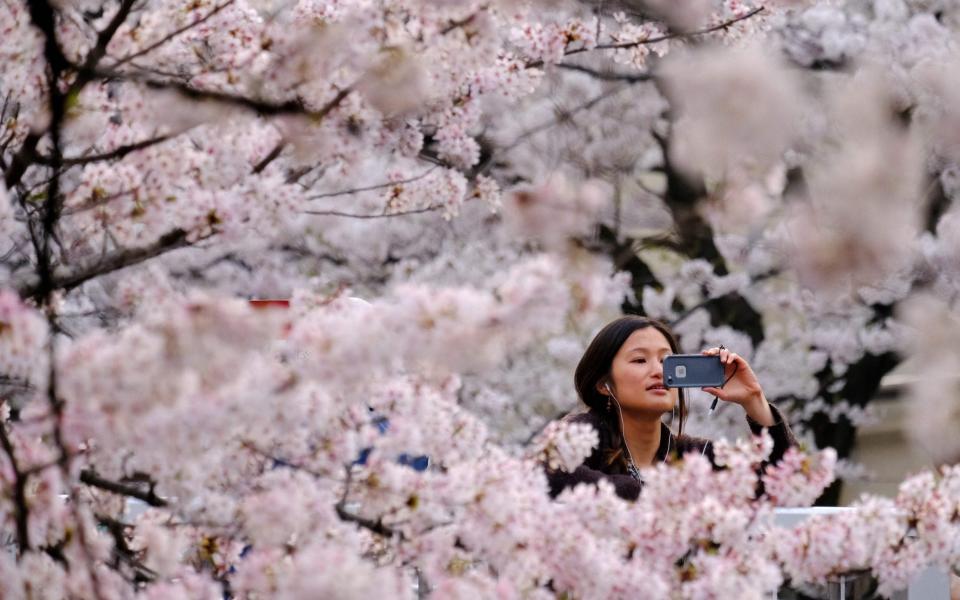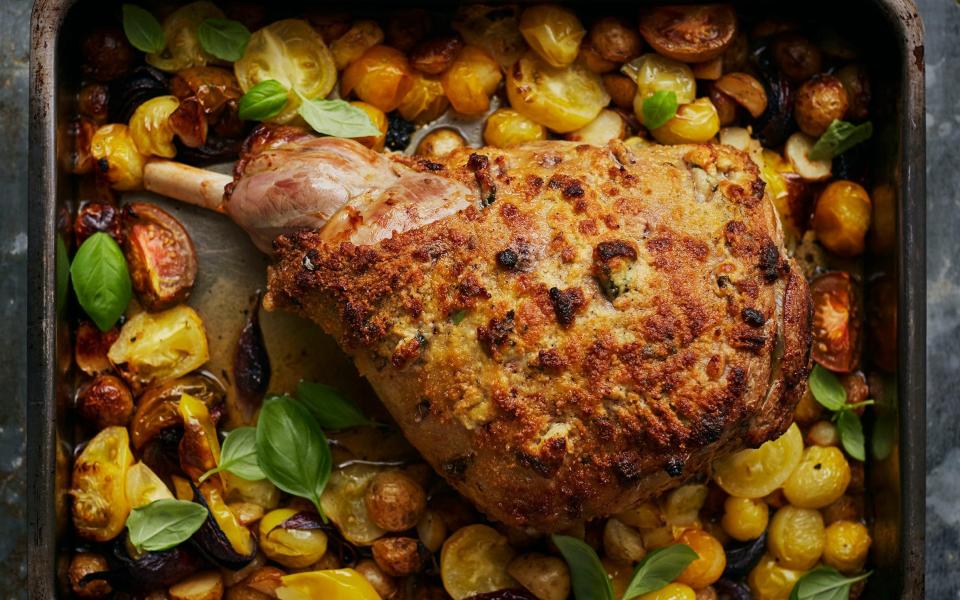How the Spring Equinox marks the changing seasons

Britons may still be feeling the cold, but not for much longer as the first day of spring is fast approaching, marking the return of longer days, new blooms and warmer weather.
The March equinox (called the autumn equinox in the Southern Hemisphere) has long been celebrated as a time of rebirth in the Northern Hemisphere.
Spring-time festivals and holidays such as Easter and Passover are the main celebrations across many cultures as the path of the Sun aligns with the Earth's equator.
When is the first day of astronomical spring?
Astronomical seasons are determined by the Earth's tilt as it orbits the Sun. These seasons revolve around equinoxes and solstices.
The Vernal or Spring Equinox, therefore marks the first day of astronomical spring; this year, it falls on Friday, March 20, in the Northern Hemisphere.
The season will continue all the way until the summer solstice, which takes place on Saturday, June 20, 2020.
Why is it called the spring 'equinox'?
Since night and day are nearly exactly the same length – 12 hours – all over the world the event is called the equinox, which literally means 'equal night' in Latin (equi – equal, and nox – night).
In reality though, equinoxes do not have exactly 12 hours of daylight. Solstices and equinoxes mark key stages in the astronomical cycle of the Earth.
In a year, there are two equinoxes (spring and autumn) and two solstices (summer and winter). This year's autumn equinox takes place on Tuesday, September 22.
The dates of the equinoxes and solstices aren't fixed due to the Earth's elliptical orbit of the Sun. They are closest in January, and most distant in July (aphelion).
The equinox marks the change of seasons, as the balance of light shifts to make for longer days or nights. Whether that means snow storms or heat waves depends on the hemisphere.
It is also possible to see the Sun rising and setting directly in the East and West, whereas it appears off-centre at other times of the year.
What happens on an equinox?
The Earth's axis always tilts at an angle of about 23.5° in relation to the ecliptic, i.e the imaginary plane created by the Earth's orbit around the Sun.
On any other day of the year, either the Northern Hemisphere or the Southern Hemisphere tilts a little towards the Sun but on the two equinoxes, the tilt of the Earth's axis is perpendicular to the Sun's rays. The equinox occurs at the exact moment the Sun crosses the celestial equator – the imaginary line in the sky above the Earth’s Equator – from south to north.

What about the meteorological spring?
The spring equinox does technically mark the first day of spring but, to make matters more confusing, there are two first days of spring. There is the meteorological spring, which began on March 1, and the astronomical spring, which begins on March 20.
Meteorological seasons are typically categorised by shifts in temperature. These are the seasons we are most familiar with, as they slot into the Gregorian calendar. They are divided into: spring (March-May), summer (June-August), autumn (September-November) and winter (December-February).
Spring symbols and celebrations around the world
The Easter Bunny
Rabbits and hares have been associated with spring since ancient times.
It is thought that the Anglo-Saxon Goddess of Spring, Eostre, had a hare as her companion, which symbolised fertility and rebirth. It’s hardly surprising that rabbits and hares have become associated with fertility as they are both prolific breeders and give birth to large litters in early spring.
The legend of the Easter Bunny is thought to have originated among German Lutherans, where the ‘Easter Hare’ judged whether children had been good or bad in the run-up to Easter. Over time it has become incorporated into Christian celebrations and became popular in Britain during the 19th century.
Many children believe that the Easter Bunny lays and hides baskets of coloured eggs, sweets and sometimes toys in their homes or around the garden the night before Easter Sunday – much like Father Christmas delivering gifts on Christmas Eve.
This has given rise to the tradition of the Easter egg hunt which is still popular among children today.
Japan's cherry blossom
As spring approaches in Japan, the arrival of cherry blossom (sakura) is hotly anticipated as the nation turns a shade of pink. Months before the blossom arrives, retailers switch into sakura mode, Danielle Demetriou writes.
The countdown excitement is heightened further by the televised Cherry Blossom Forecast which offers a petal-by-petal analysis of the advance of the blooms – known as the cherry blossom front – as they sweep from the south to the north of the archipelago.

Nowruz
Nowruz is the name of the Iranian New Year, also known as the Persian New Year, which is celebrated worldwide, along with some other ethno-linguistic groups, as the beginning of the New Year.
In Farsi, Nowruz means "New Day". It is a festival that has roots in Zoroastrianism and has been celebrated for over 3,000 years in Western Asia, Central Asia, the Caucasus, the Black Sea Basin and the Balkans.
Before the collapse of the Soviet Union, Iran was the only country that officially observed the ceremonies of Nowruz.
When the Caucasian and Central Asian countries gained independence from the Soviets however, they also declared Nowruz as a national holiday.
Nowruz marks the first day of the first month (Farvardin) in the Iranian calendar and is often celebrated at the exact moment of the vernal equinox, when the days start getting longer, and the celebrations can continue for up to two weeks.
Perhaps the most enduring image of Nowruz is gathering around a bonfire with family and friends.
Holi Festival
The colourful Hindu festival of Holi is celebrated around the time of the vernal equinox. In 2020, this took place on Monday, March 9, and Tuesday, March 10.
The ancient religious festival is mainly observed in India and Nepal, although celebrations have spread around the world and the UK.
The celebrations begin with a bonfire the previous evening where revellers sing and dance. Holi celebrations then become colourful as participants throw coloured powder over each other.
The festival signifies the victory of good over evil with the onset of spring and the end of winter.
Spring lamb recipes
José Pizarro's roast rack of lamb with braised peas and lemon-thyme salsa
A Spanish roast with a spring-like twist of lemony herb relish and warmed peas.
Diana Henry's roast leg of lamb with potatoes, pecorino, basil and garlic
Italian flavours in an easy one-tin roast.

Michel Roux Jr's roast saddle of lamb stuffed with spinach and garlic
A beautiful stuffed roast saddle, served with a saffron jus.
Angela Hartnett's lamb sweetbreads with crispy lamb breast and ricotta
Caramelised sweetbreads contrast with fresh ricotta and a minty, citrus salad.

Rose Prince's lamb steak with broad beans, shallots and mint
A simple and quick dish of pan-fried lamb teamed with warm broad beans and fresh mint.


